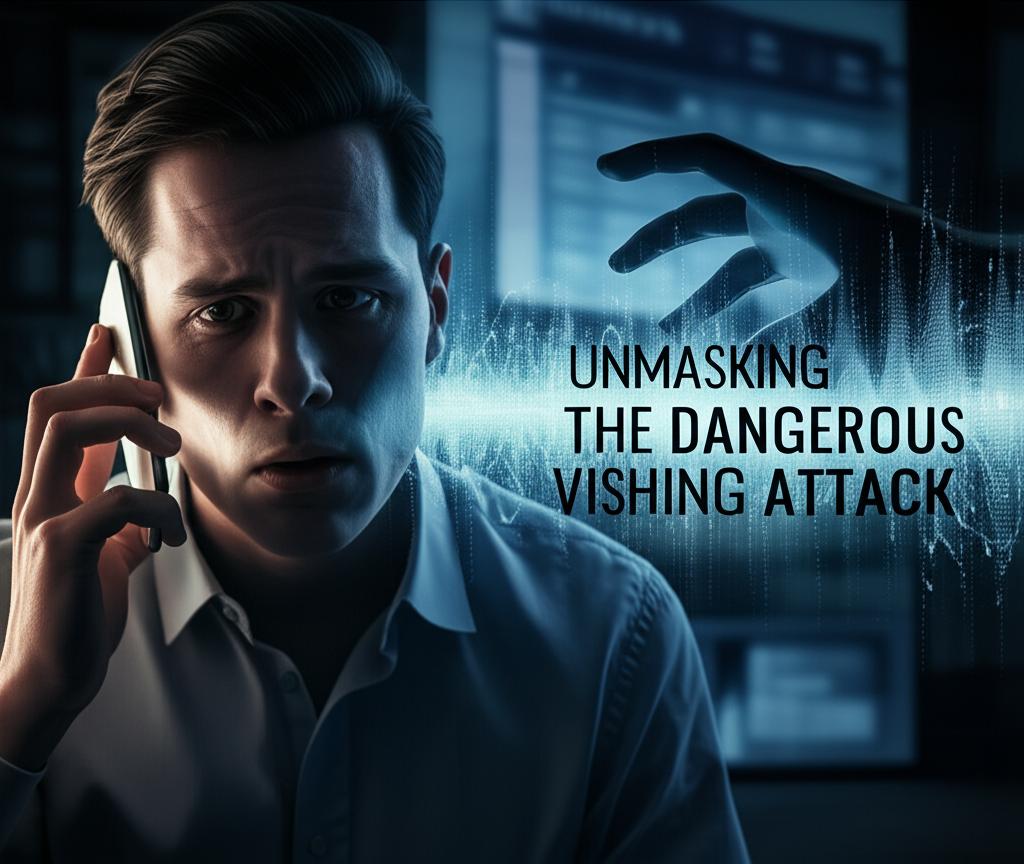Unmasking the Dangerous Vishing Attack: How to Stay Safe
What is a Vishing Attack?
In the evolving landscape of cybercrime, the Vishing attack stands out as a particularly insidious form of social engineering. Derived from a combination of “voice” and “phishing,” vishing refers to fraudulent attempts to trick individuals into divulging sensitive personal, financial, or confidential information over the phone. Unlike traditional phishing, which primarily relies on email, a Vishing attack leverages the immediacy and perceived legitimacy of a voice call, making it a powerful tool for scammers.
Attackers often impersonate trusted entities like banks, government agencies, tech support, or even law enforcement, using sophisticated tactics to create a sense of urgency or fear. The goal of a Vishing attack is to manipulate the victim into performing actions that compromise their security, such as transferring money, providing credit card details, or granting remote access to their computer.
How Vishing Attacks Work
A typical Vishing attack often begins with an unexpected call, sometimes spoofing a legitimate number to appear credible. The scammer, often using persuasive language and a calm, professional demeanor, will attempt to build rapport or induce panic, depending on their chosen narrative. They might:
- Claim there’s suspicious activity on your bank account, requiring immediate verification of details.
- Pretend to be from a government agency, threatening legal action if you don’t pay an overdue “tax bill.”
- Act as tech support, stating your computer has a virus and needs remote access to fix it.
- Offer an enticing but fake prize or opportunity that requires a small upfront payment or personal data.
The human element of a Vishing attack is what makes it so dangerous. Victims are often caught off guard, making it harder to critically assess the situation and identify the deception.
Common Vishing Tactics
Vishing scams employ several psychological tactics to achieve their objectives:
- Urgency and Fear: Creating a sense of immediate danger or consequence if the victim doesn’t act quickly.
- Impersonation: Posing as reputable organizations or individuals to gain trust.
- Technical Jargon: Overwhelming victims with complex technical terms to make the scam sound legitimate.
- Caller ID Spoofing: Manipulating the caller ID to display a legitimate company’s or institution’s phone number.
- Pre-recorded Messages (Robocalls): Automated messages directing victims to call a fraudulent number.
Real-World Examples of Vishing
Vishing can manifest in many forms. Here are a few common scenarios where a Vishing attack might occur:
- Bank Impersonation: A call claiming to be your bank’s fraud department, asking for account numbers, PINs, or one-time passwords to “verify” a transaction.
- Tech Support Scam: An unsolicited call from someone claiming to be from Microsoft, Apple, or another tech company, stating your computer is infected and needs immediate attention, often leading to remote access or software purchase.
- Government Agency Scams: Posing as the IRS, Social Security Administration, or local police, demanding payment for back taxes or threatening arrest.
- Prize or Lottery Scams: Notifying you of a large prize win, but requiring an upfront fee or personal details to claim it.
Why Vishing is So Effective
The effectiveness of a Vishing attack lies in its ability to exploit human psychology. Unlike emails, phone calls feel more direct and personal, creating a stronger sense of obligation or panic. Scammers often use social engineering techniques to pressure victims, giving them little time to think or verify the claims. The lack of visual cues present in emails or websites can also make it harder for victims to spot red flags.
Protecting Yourself from Vishing Attacks
Staying vigilant is your best defense against a Vishing attack. Here are crucial steps to protect yourself:
- Be Skeptical of Unsolicited Calls: If you receive an unexpected call, especially one demanding immediate action or personal information, treat it with extreme caution.
- Verify the Caller’s Identity: If you suspect a call is legitimate, hang up and call the organization back using a trusted phone number (e.g., from their official website or a statement), not a number provided by the caller.
- Never Share Sensitive Information: Do not give out personal data like account numbers, passwords, PINs, social security numbers, or credit card details over an unsolicited call.
- Guard Your Passwords: Use strong, unique passwords for all accounts and enable multi-factor authentication whenever possible.
- Don’t Trust Caller ID: Caller ID can be spoofed. A displayed legitimate number does not guarantee the caller is who they claim to be.
- Educate Yourself: Stay informed about common scam tactics and share this knowledge with friends and family.
What to Do if You’re a Target of Vishing
If you suspect you’ve been targeted by a Vishing attack, or worse, have fallen victim:
- Hang Up Immediately: Do not engage with the caller.
- Report the Incident: Contact your bank, credit card company, or the relevant authorities (e.g., FTC, FBI, local police).
- Change Passwords: If you shared any login credentials, change them immediately.
- Monitor Your Accounts: Regularly check your bank and credit card statements for any unauthorized activity.
- Freeze Credit: Consider placing a credit freeze to prevent new accounts from being opened in your name.
The Future of Vishing
As technology advances, so do the methods of scammers. The rise of AI-powered voice synthesis could make vishing attacks even more convincing, allowing attackers to mimic voices of trusted individuals. Continuous awareness and robust security practices will be essential in combating these evolving threats.
By understanding what a Vishing attack is and how to defend against it, you can significantly reduce your risk of becoming another statistic in the world of cybercrime. Stay alert, stay safe!







